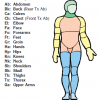robertsconley
Legendary Pubber
- Joined
- May 3, 2018
- Messages
- 5,747
- Reaction score
- 15,031
As promised.
First off Harnmaster is divided into loose leaf articles meant to be placed in a 3-ring binder. There were a few exceptions but the whole line was published like this after the mid 80s.

circa 2010 I will post a more recent screen shot later
Introduction
This is a 2 page article outlining the system and their philosophy.
The basic gist is stated in this sentence
The Gamemaster (GM)
Explain their view of the role of the gamemaster which is summarized as thus.
Also says this about the players
The sidebar explains the other products in the Harnmaster system.
General Information
This is a short section explaining all the terms, conventions, and abbreviation used in the rules.
Rob's Comments
One of the reason I like Harnmaster and product is that their view of how to run a campaign closely aligns with mine. Most of their products I found highly useful for my Majestic Wilderlands setting because of this.
Next Characters
First off Harnmaster is divided into loose leaf articles meant to be placed in a 3-ring binder. There were a few exceptions but the whole line was published like this after the mid 80s.
circa 2010 I will post a more recent screen shot later
Introduction
This is a 2 page article outlining the system and their philosophy.
The basic gist is stated in this sentence
HârnMaster
is a fantasy role-playing game in which players assume the identities of characters who explore and experience a fantasy world.
The Gamemaster (GM)
Explain their view of the role of the gamemaster which is summarized as thus.
The Gamemaster (GM) is apart from the players and functions much like a referee at a sports event. Among many other things, the GM controls weather and climate, societies and institutions, and deities and religions.
The GM stands between the fantasy world and the players, describing and explaining it, and operating the denizens that hinder the PCs’ lives. But the GM also operates Non-Player Characters (NPCs) who can befriend and assist PCs and should never, therefore, be viewed as the “enemy.”
Also says this about the players
The players’ challenge is to explore the fantasy world, meet it on its own terms, and succeed according to the goals they set for themselves.
The sidebar explains the other products in the Harnmaster system.
General Information
This is a short section explaining all the terms, conventions, and abbreviation used in the rules.
Rob's Comments
One of the reason I like Harnmaster and product is that their view of how to run a campaign closely aligns with mine. Most of their products I found highly useful for my Majestic Wilderlands setting because of this.
Next Characters





 Hârn started as a C&S campaign IIRC. That being said, it's squeaky clean, unlike either RQ or C&S which, as much as I love them, are far clunkier. HM is mechanically superior in every way to either system. It plays incredibly smoothly.
Hârn started as a C&S campaign IIRC. That being said, it's squeaky clean, unlike either RQ or C&S which, as much as I love them, are far clunkier. HM is mechanically superior in every way to either system. It plays incredibly smoothly.


 If I ever run Glorantha again, I might just use HârnMaster and import the Runes from RQG. Would probably work nicely.
If I ever run Glorantha again, I might just use HârnMaster and import the Runes from RQG. Would probably work nicely.



















 !
! .
.



